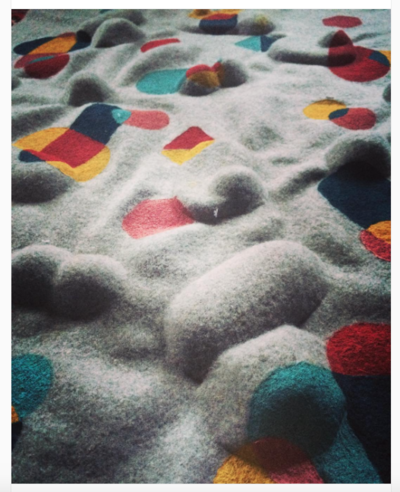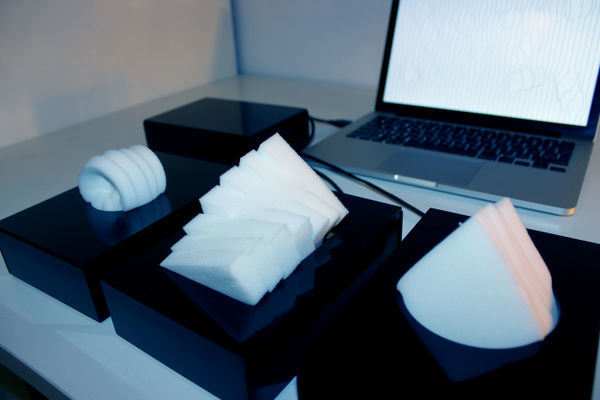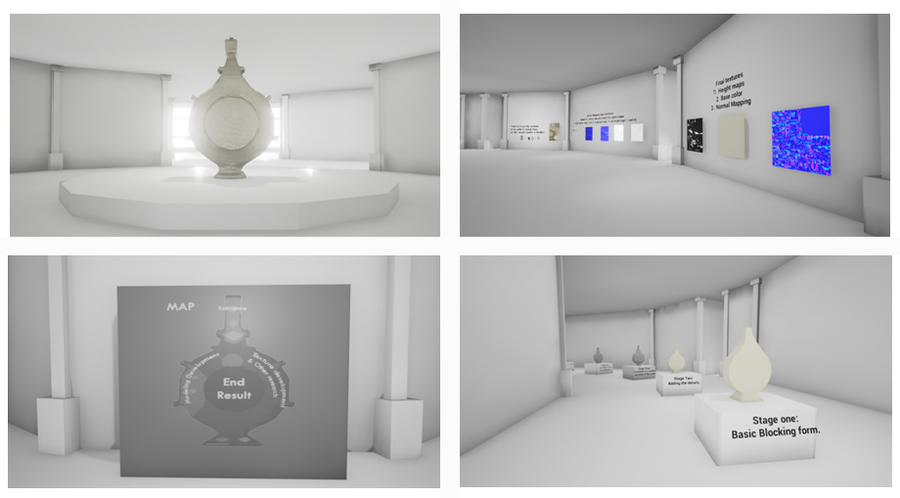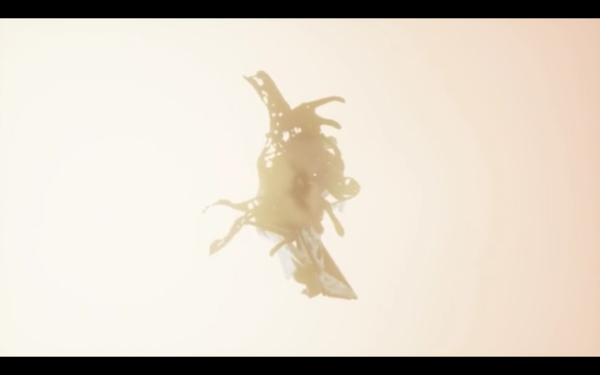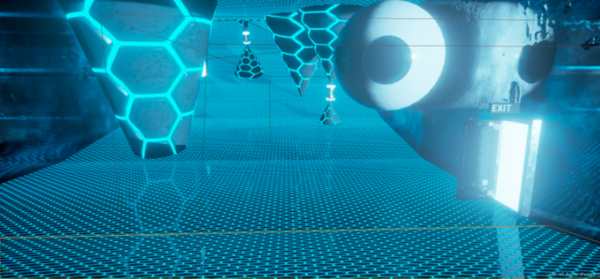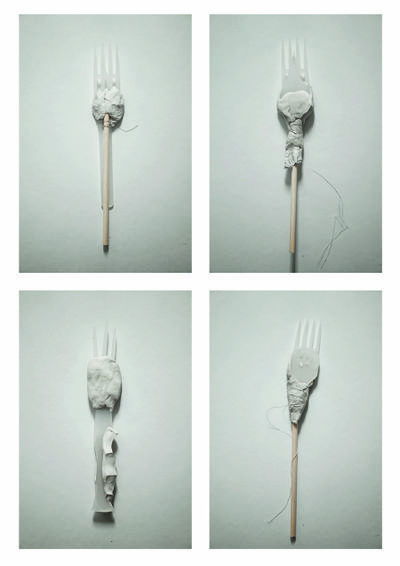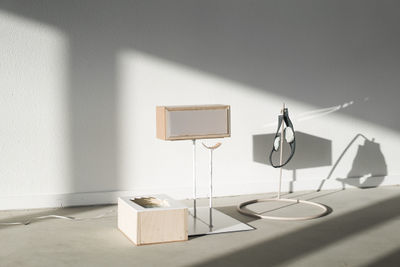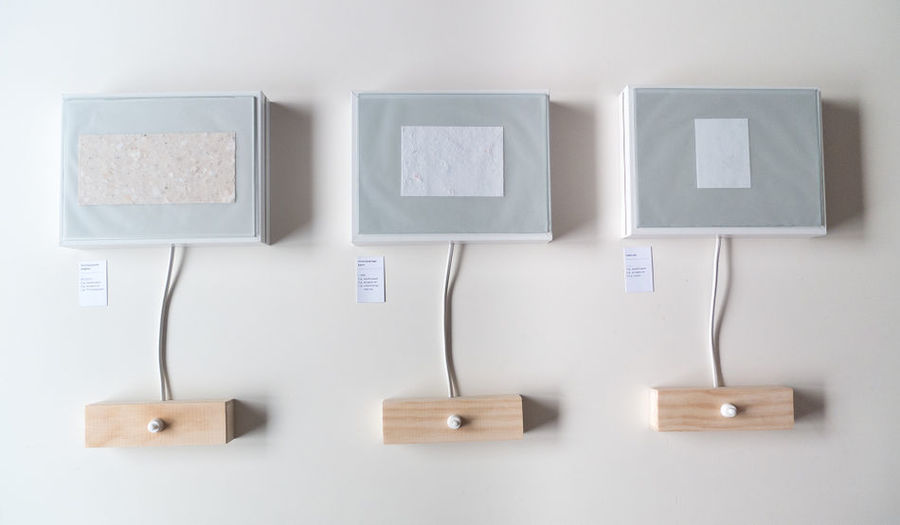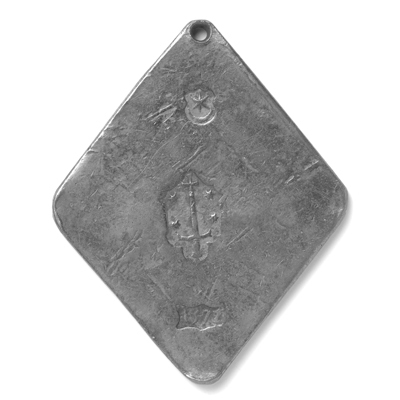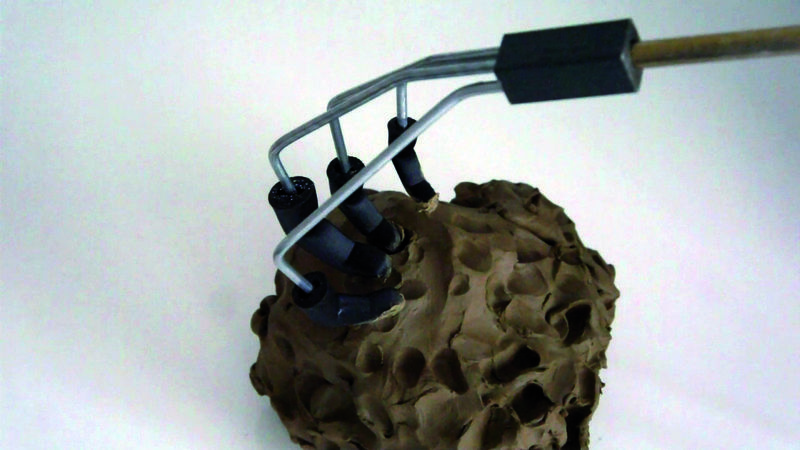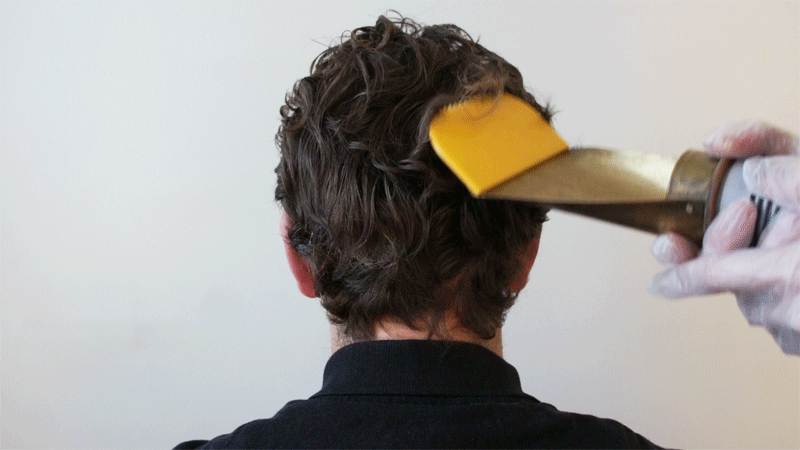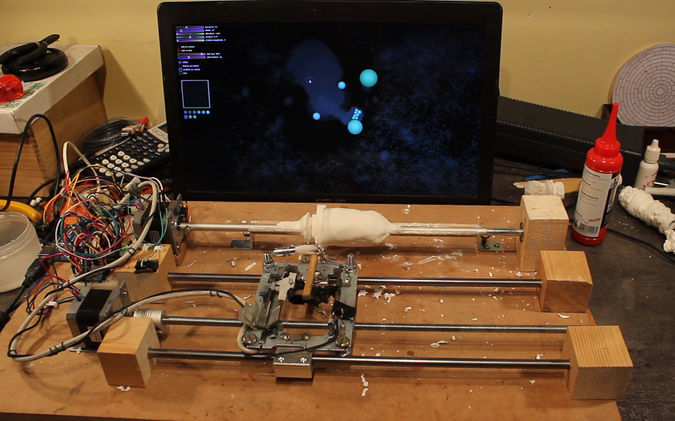Difference between revisions of "Practical/Exhibited Works"
| Line 83: | Line 83: | ||
Crafting with the imperfection of the digital tools, can produce a strange and disorganize results. | Crafting with the imperfection of the digital tools, can produce a strange and disorganize results. | ||
This piece not about making a statement. Reorganizes the elements, helps the viewer to see object in a different way. | This piece not about making a statement. Reorganizes the elements, helps the viewer to see object in a different way. | ||
| + | |||
| + | Roel's re-phrasing: | ||
| + | <span style="color:red">By recreating highly detailed and life-like scenarios, digital art is often about perfection. It is however more interesting to exploit the imperfections within the tools, as they can produce strange and unpredictable results.</span> | ||
| Line 94: | Line 97: | ||
The installation is developed meant as a therapeutic treatment tool for Reverse Reality Shock. | The installation is developed meant as a therapeutic treatment tool for Reverse Reality Shock. | ||
| + | Roel's re-phrasing: | ||
| + | <span style="color:red"> | ||
| + | Reverse Reality Shock’ is the process of re-adjusting, re-assimilating and re-acclimatizing to the real world. It is one of the symptoms commonly occurring after having become overly immersed in virtual reality. The syndrome can take such severe forms that re-adjustment is no longer possible. On view is a trial version of the only therapeutically treatment known at present.</span> | ||
---- | ---- | ||
Revision as of 18:08, 20 January 2016
List all of your projects here.
Please provide:
a title
an image
a short description of the project
-Lizet
-For Fantastic forgeries-
My starting point was to figure out what I miss in textile. When I went to Première Vision, a textile event I realized that al the textiles have different colours, prints and materials but we don’t have a extra layer, a 3th dimension in fabric. In my work I make that extra dimension. It’s an added value in textile, the fabric will have movement, volume and every time a different shadow.
For “Fantastic forgeries” I created a new woven technique with fabric. We choose an artwork from a exposition to copy this object in your own technique. I use the carpet of Albert Van huffel. The focus was to find a way that I can fold different layers of fabric into each other and that it would stay in the position without sewing.

- for felt it -
My starting point was to figure out what I miss in textile. When I went to Première Vision, a textile event I realized that al the textiles have different colours, prints and materials but we don’t have a extra layer, a 3th dimension in fabric. In my work I make that extra dimension. It’s an added value in textile, the fabric will have movement, volume and every time a different shadow.
For “Tools of the trade” I created a tool that is a heat press itself. With this tool you can press 3 dimension prints in textile. “Tools of the trade” is a starting point for my graduation collection. My final collection is going to be based on the concept of our rich fantasy memories and positive escapism. The stories that we believed as children and fantasy stories that we created in our head are the biggest inspiration.
Roel's re-phrasing: There is something missing in contemporary textile design. Even though it is possible to play with colours, patterns, prints and a wide range of materials they miss an extra dimension. These projects are about finding new ways of playing with movement, volume and ever changing light by making 3d textured surfaces.
Inspired by a carpet by Albert Van Huffel, a way of making fabrics that uses different layers of fabric folded into each other, to assemble textiles without a sewing machine.
Using a self made heat press to turn flat felt into textured textiles. The heat press creates shapes remniscent of rolling hills and strange far-away lands. Remembering childhood stories and dreamy memories, as the starting point for a graduation collection.
Dionne Wolff
Tangible computer interface
How can the design of a tangible computer interface help to create an innovative hands on approach for textile print designers?
What inspired me for this project was, the way I make use of my laptop to create digital prints. This is mainly trough a mouse or trackpad, which adjusts the prints in an unnatural way. I wondered what would happen, if somehow the print could really sense touch. And how this print would respond to this. This tool-kit stimulates the relation between the maker and the digital process. It is made out of polyurethane flexible foam and is attractive to touch and play with. Sensors are build in for communication with the digital print. Functions of different hand gestures would be: flex, push, pinch, stroke, pull and so on. This way making a digital print becomes more exciting, more personal and more unique for each designer.
Roel's re-phrasing:
The click of mouse, the tap of keyboard or the stroke of the track pad are the only ways one interacts with software when designing digital prints. What would happen if during the making process the print could sense it's makers touch? How would it react when pinched, stroked or pushed? And what designs does one make when one doesn't tap, but pull. Or flex rather than click? A toolkit to stimulate a different interaction between the maker and the digital work flow.
Jermaine van der Kolk
Museum of Reproduction
In the Museum of Reproduction you will be invited to view the process of a real-life object transformed to a digital model.
You will be able to view the different aspects of its craft and how the final sculpture came to be.
Roel's re-phrasing:
In the Museum of Reproduction you are invited to see the transformation of a real-life object into a digital model. See the work in its wire-frame scaffolds, be amazed by the spectacle of specular maps and let yourself be filled with awe by the bigger-than-life pièce de résistance in the central hall of the museum. Admissions are free for adults and children alike.
Lucas Hartman
Forge Glitch
With the use of mathematical precision, Digital Art is often about perfection. Crafting with the imperfection of the digital tools, can produce a strange and disorganize results. This piece not about making a statement. Reorganizes the elements, helps the viewer to see object in a different way.
Roel's re-phrasing: By recreating highly detailed and life-like scenarios, digital art is often about perfection. It is however more interesting to exploit the imperfections within the tools, as they can produce strange and unpredictable results.
Reverse Reality Shock Treatment
Reverse Reality Shock’: Its the process of re-adjusting, re-assimilating and re-acculturating to the real world. Meant for people that have became custom to the virtual world. The installation is developed meant as a therapeutic treatment tool for Reverse Reality Shock.
Roel's re-phrasing: Reverse Reality Shock’ is the process of re-adjusting, re-assimilating and re-acclimatizing to the real world. It is one of the symptoms commonly occurring after having become overly immersed in virtual reality. The syndrome can take such severe forms that re-adjustment is no longer possible. On view is a trial version of the only therapeutically treatment known at present.
Michelle
Tools of the trade
We're all mad here
My approach on fashion often starts by experimenting with materials.
I like to search for the boundaries of these materials, what are they meant for, what are they made of and what’s the story behind the material?
The craft that I explored for this project is the technique of felt hat making. This technique allows you to shape felt with the use of hot steam.
With this technique came a story of 'the mad hatters disease' which I tried to portray in 3Dimensional prints.
ROBIN
'Eten doe je met je handen'
You there, Could you picture the fork you ate with? I guess a small piece of metal with four iron teeth on top. But what about the small detailes which makes every fork unique? It has become so normal that it's not worthy to remember.
Stripping daily proceedings to their essence and build up again, to create a new level of wonder in something what already exists. And open up different ways of seeing and experiencing.
'What about your senses'
How many things have you seen, felt or heard before you came here? And at how many did you really paid attention to? This project is about taking a moment for your senses and give them the opportunity to reset. To create awareness for the shitload of 'prikkels' we perceive every day.
CISKA
' The impermanence of value '
A recreation of the emergency money (notgeld) coins from the siege of Haarlem (1572).
They where made from recycled silver objects. They look like leftover material that has no value at all. They got its value by the image minted on it. The re use of existing materials where interesting for me.
I was searching for an opposite material that is impermanent and will not long be maintained. And came out with paper. I wanted to use the technique to make my own paper and experiment with it.
Over the years, confidence in the financial markets dropped sharply, and is still declining. The paper shows the impermanence of value. There are three different values.
Note: i couldn't came up with a short and arty text.
Joeke van der Veen
Please Don’t Touch
This tool replicates the work process of Satoru Hoshino. His work process is all about his hands touching the clay.
The finger- and handprints visible in his work represent his dialogue with the material.
But when exhibited in a museum setting, the visitor is not allowed to touch the artefact and therefore does not experience this dialogue.
This tool makes this distance visible and allows the maker to edit the clay without having to touch it with their own hands.
Human as Resource
This setting represents an experimental factory where the human is seen as a resource that provides materials for production.
In this factory, hair fallen out of the follicle can be seen as a source of value and can be incorporated into design and production processes.
It shows how harvesting human materials can help us to reconsider our current industrial production system.
Sanne
FABER
In my work I usually start with experimenting with materials and see if I can create a new textile or print. In this project I started creating new ways to recycle old clothing. I made textiles out of the fibers from different materials. By recycling/re-using old clothing you can create a new aesthetic in fashion. The look and feel of the textiles I made are something you would want to touch & wear and will give an unique look. Because every piece will be different, depending on what fibers are used and what colors, the possibilities are endless.
Tim
Alternative reality creation machine
This tool generates alternative realities, by changing the fundamental particles of the universe.
The object that is carved out from the machine is based on the movement, position and size of the particles, which I can give my own defined characteristics.
It represents how a natural object from a parallel universe with the defined particles might look like.
